Electro-Hydraulic Basics: Controlling Cylinder using the Logic Module
1. Introduction
In this blog, we create and explain a circuit that actuates a cylinder using the logic module. The logic module offers a different perspective in implementing the process at hand. Logic modules controls the cylinder's motion by means of digital logic gates. In a previous blog on logic modules in electro-pneumatic system, we discussed the fundamental logic function available in our logic module. The logic gates are NOT, AND, NAND, OR, NOR, XOR, and XNOR. The truth table for each of the ogic gates are discussed in details in the previous blog.
For this blog, we create a simple logic controller that enables us to extend and retract the cylinder. To serve as the basis for our circuit, we define a process or problem. The problem is describe as
Using a double-acting hydraulic cylinder a work piece is removed and tipped onto a conveyor belt. The operation is to be started using a push button. An acknowledgement signal is required when the piston is fully extended, to ensure that the work piece has been tipped onto the belt. The return stroke is to be automatic.
The logic controller should be able to receive an input signal from a start button and a pair of sensors. The problem specify that the cylinder automatically retracts after reaching full extended length. It can be monitored by placing a pair of sensor at the retracted and extended position of the cylinder. In the next section, we create and discussed the circuit in details.
2. Circuit and Simulation
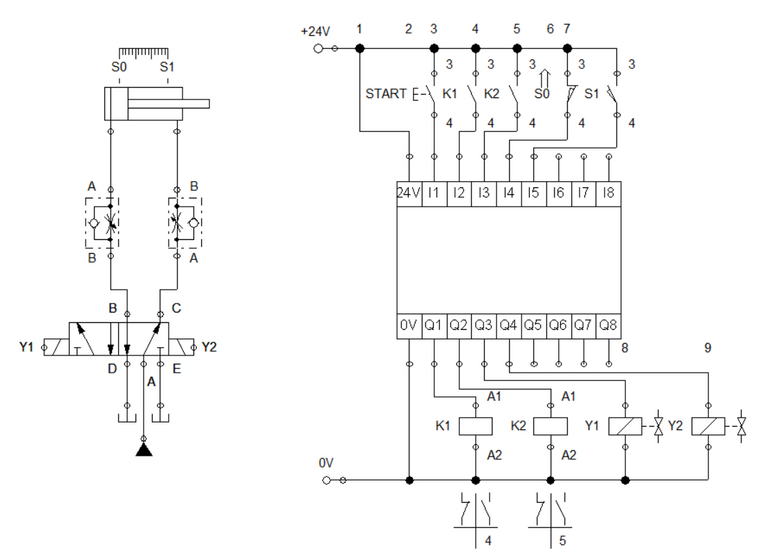
Figure 1: Electro-Hydraulic Circuit with Logic Controller
For the hydraulic circuit, a double solenoid 5/2 way valve drives the cylinder while a pair of one-way flow control valve limits the speed of extending and retracting of the cylinder. For the logic controller, we set the input and the output devices in the logic module. At the input, we connected a start button, a pair of relay contact and a pair of sensor. The output terminal is connected to a pair of relay and solenoid. The configuration is shown in Figure 1.
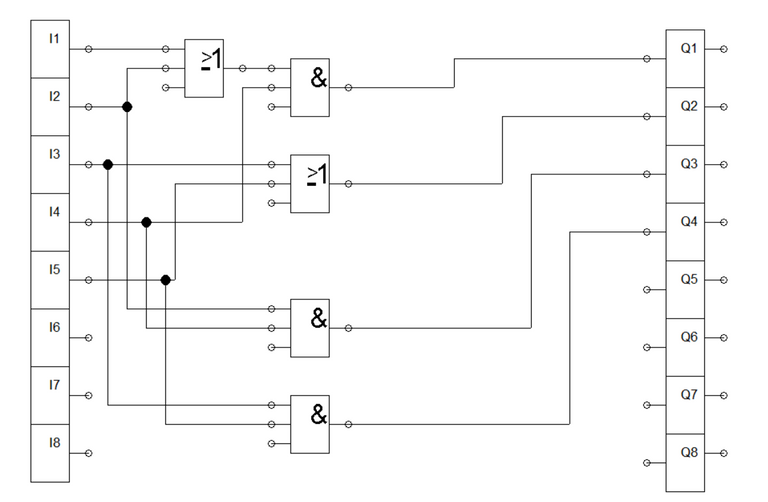
Figure 2: Logic Control Circuit
We connect the start button and contact K1 to an OR gate so that when start button is pressed, activation is sustained by contact K1. We connect the output of the OR gate and sensor S0 to an AND gate. It completes the required input to activate relay K1. To activate solenoid Y1, we connect contact K1 and sensor S1 to solenoid Y1 so that sensor K1 deactivate relay K1 when cylinder is fully extended. Solenoid Y1 enables the 5/2 way directional valve to extend the cylinder. Figure 3 shows the activation of relay K1 and solenoid Y1 in the logic controller.
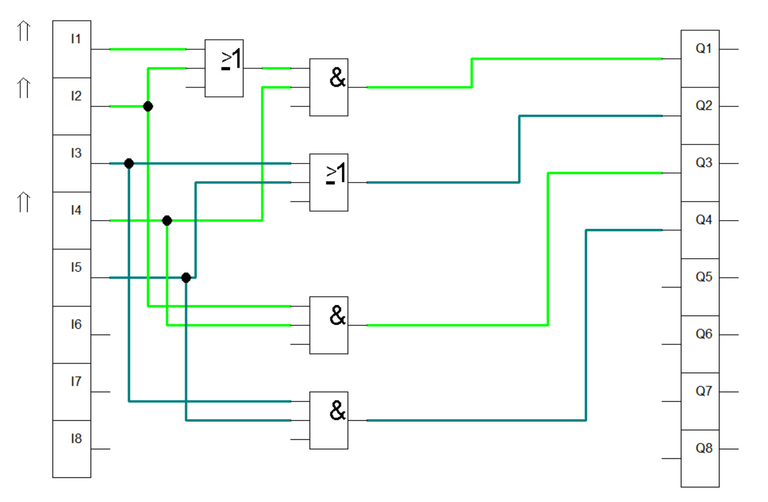
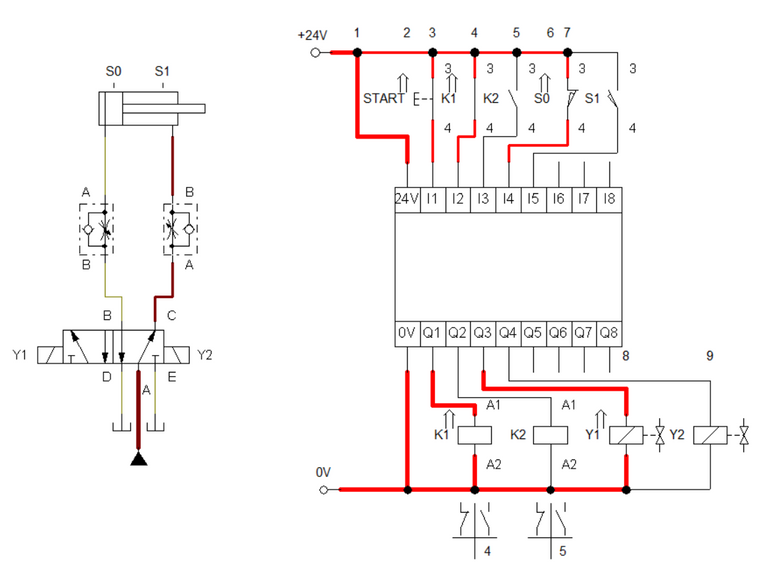
Figure 3: K1 and Y1 is activated
To retract the cylinder, we need to activated relay K2 and solenoid Y2. Relay K2 is connected to the output of an AND gate, wherein the input is signal from sensor S1 and latching contact K2. The sensor S1 detects the fully extended length of the cylinder so that it can automatically retracts afterwards. Relay K2 closes contact K2 which enables solenoid Y2 to retract the cylinder. To make sure that retraction only happen when cylinder reached fully extended length, sensor S1 is placed in series with contact K2 and solenoid Y2. Solenoid Y2 opens port C of the 5/2 way directional control valve to retract the cylinder. it is shown in Figure 4. The simulation is shown in Figure 5.
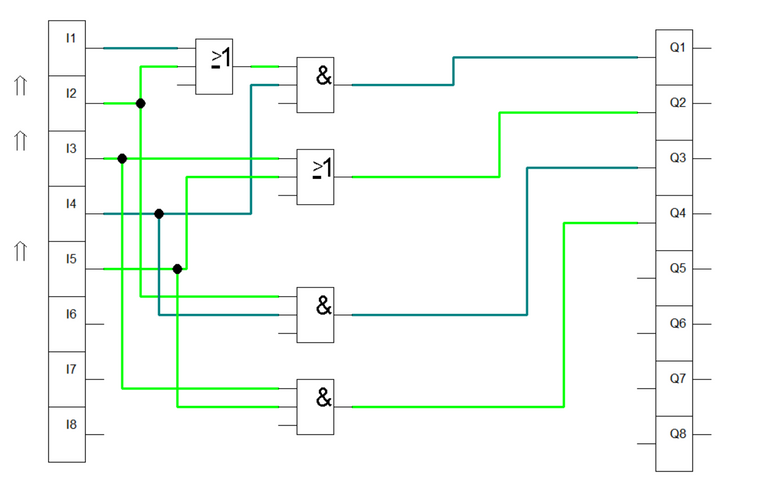
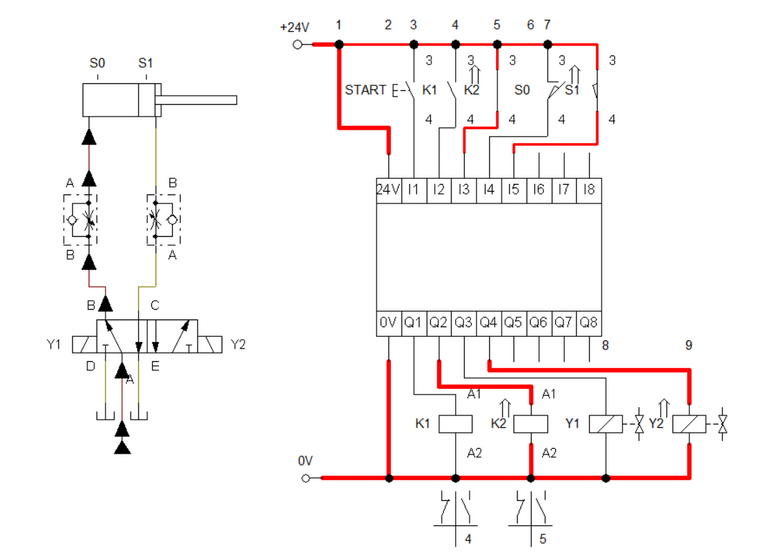
Figure 4: K2 and Y1 is activated.
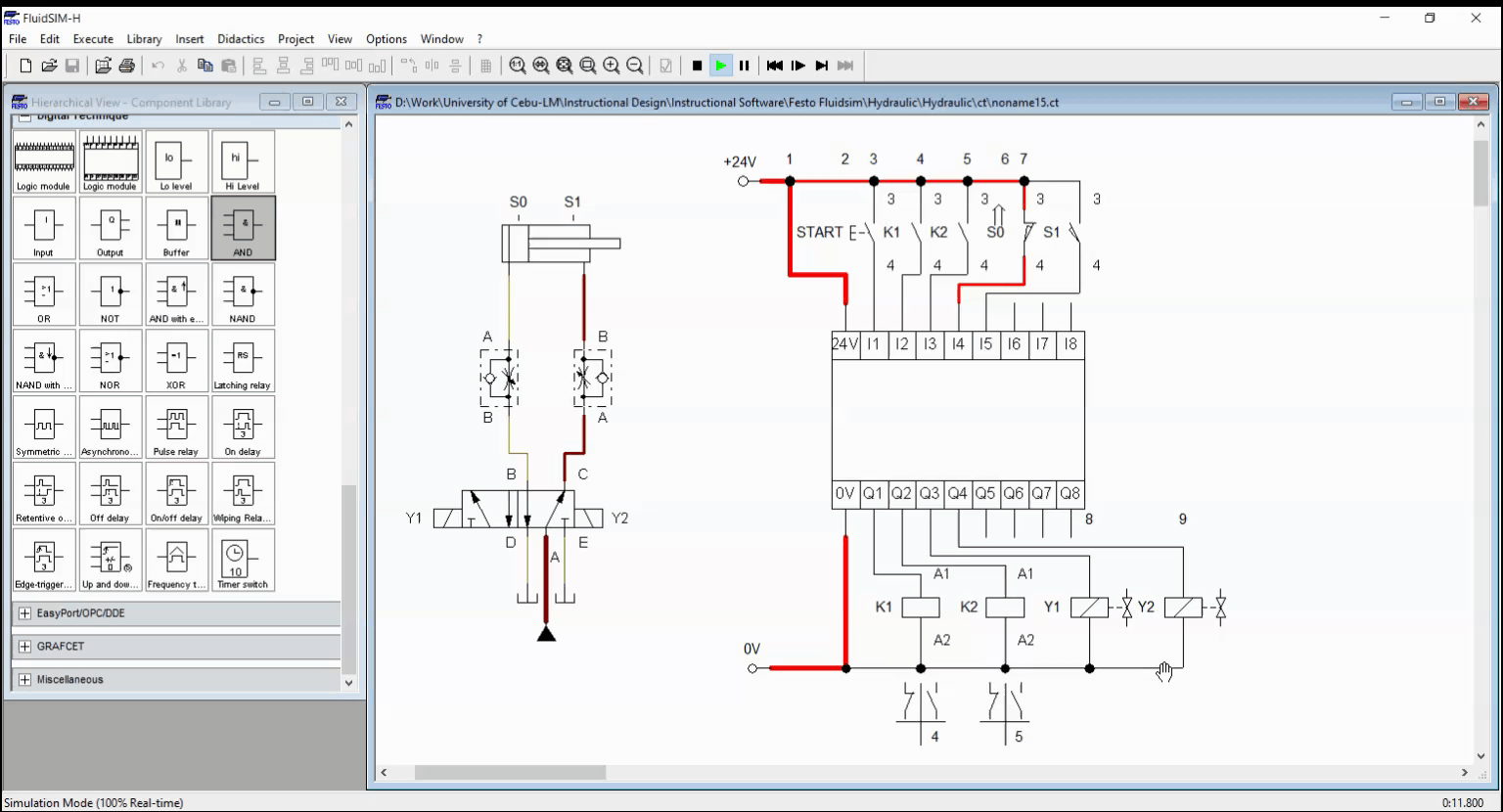
Figure 5: Simulation
3. Conclusion
In this blog, we create a electro-hydraulic circuit that uses logic controller to achieve the process describe in the problem. We used a combination of logic gates to encode the required condition. The important points to remember in creating a logic controller is to fully grasp the condition of activating the logical gates.
4. References
[1] Hydraulic Basic Level. online access
[2] Hydraulic Advance Level. online access
[3] Electro-Hydraulic Basic Level. online access
[4] Electro-Hydraulic Advance Level. online access
(Note: All images and diagram in the text are drawn by the author (@juecoree) except those with separate citation.)
If your are interested in pneumatic and hydraulic series, you can read:
Pneumatic and Electro-pneumatic
1. Pneumatic Basics: Direct Control
2. Pneumatic Basics: Indirect Control
3. Pneumatic Basics: AND and OR Logic
4. Pneumatic Basics: Memory Circuit and Speed Control
5. Pneumatic Basics: Dependent control
6. Pneumatic Basics: Multiple Actuators
7. Electro-pneumatic Basic: AND and OR Logic
8. Electro-pneumatic Basics: Interlocking, Latching and XOR logic
9. Electro-pneumatic Basics: Distribution of Workpiece
10. Electro-pneumatic Basic: Ejecting a workpiece
11. Electro-pneumatic Basics: Basic Automation
12. Electro-pneumatic Basics: Automation with Counter
12. Electro-pneumatic Basics: Automating with Timer
13. Electro-pneumatic Basics: Cementing Press (Time Dependent Control)
14. Electro-pneumatic Basics: Embossing Device
15. Electro-pneumatic Basics: Bending Device
16. Electro-pneumatic Basics: Introduction to Logic Module
17. Electro-pneumatic Basics: Automating with Logic Controller
18. Electro-pneumatic Basics: Logic Controller for Multiple Actuators
19.Electro-pneumatic Basics: Time-dependent control with Logic Controller.
Hydraulics and Electro-Hydraulic
20. Hydraulic Basics: Direct Control
21. Hydraulic Basics: Indirect Control
22. Hydraulic Basics: Dual Pressure Value and the AND Logic
23. Hydraulic Basics: Shuttle Valve and the OR Logic
24. Hydraulic Basics: Sequencing Multiple Cylinders (Actuators)
25. Hydraulic Basics: Automating Multiple Cylinders (Actuators)
26. Electro-Hydraulic Basics: Direct and Indirect Control (Part 1 of 2)
27. Electro-Hydraulic Basics: Direct and Indirect Control (Part 2 of 2)
28. Electro-Hydraulic Basics: Two ways in Implementing AND logic
29. Electro-Hydraulic Basics: Two ways in Implementing OR logic
30. Electro-Hydraulic Basics: Circuit with ON and OFF-delay Timer
31. Electro-Hydraulic Basics: Automating Processes (1 of 3)
32. Electro-Hydraulic Basics: Automating Processes using Timer (2 of 3)
33. Electro-Hydraulic Basics: Automating Processes with Counter (3 of 3)
34. Electro-Hydraulic Basics: Controlling Multiple Cylinder
35. Electro-Hydraulic Basics: Automating Multiple Cylinder
Posted with STEMGeeks
Congratulations @juecoree! You have completed the following achievement on the Hive blockchain and have been rewarded with new badge(s) :
You can view your badges on your board and compare yourself to others in the Ranking
If you no longer want to receive notifications, reply to this comment with the word
STOPTo support your work, I also upvoted your post!
Check out the last post from @hivebuzz: